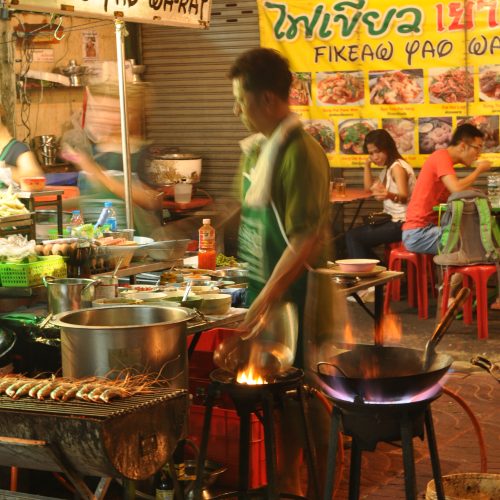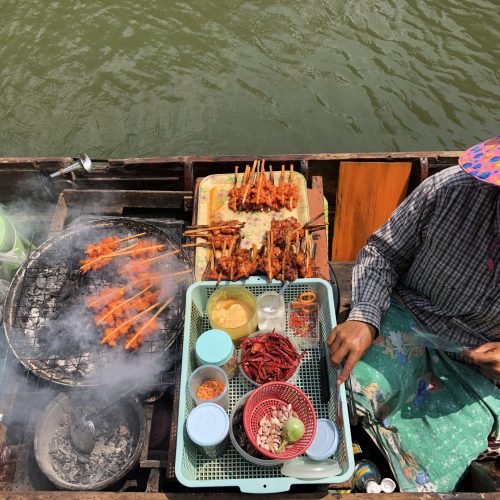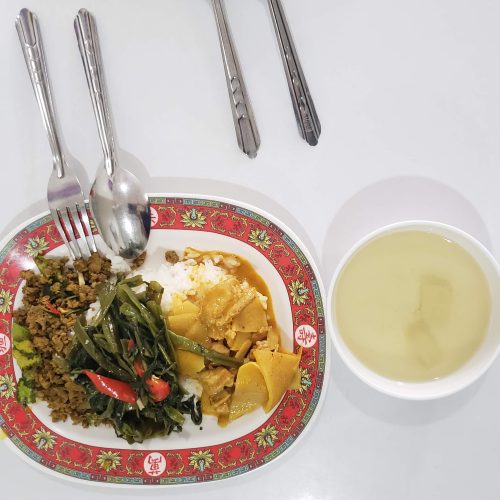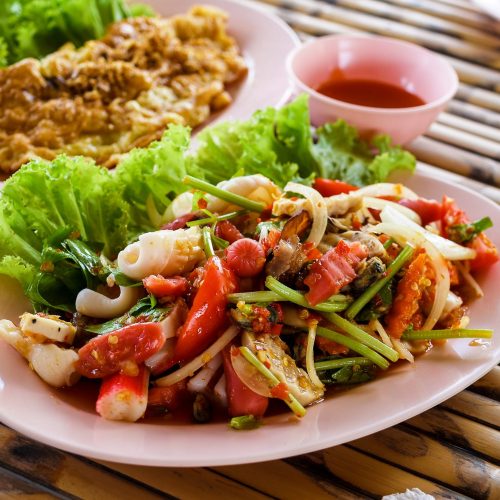A Beginner's Guide to Bangkok Street Food
We may be biased here, but we think Thai food is some of the world’s best. But no matter how good your local Thai joint is, the best place to find the tastiest, most authentic eats in Bangkok is on the streets.
There are hundreds of dishes, and dozens of varieties of each one – we’ve been here for almost 15 years and we have found some of our favorite street hotspots but are also continually finding new places to grab amazing food on the street.
What the Guidebooks Say
Many guidebooks list dire consequences for eating unsanitary food, and from a western point of view, some street food restaurants look a bit dodgy. But as true fans of Thai food who have eaten at every type of place from five-star hotels to no-star food stalls, that even Google Maps couldn’t find, we can assure you that if you have an adventurous spirit and follow our few simple rules, you shouldn’t have any problems.
Adjustment Period
What you must keep in mind is that you’ll almost certainly have an adjustment period. Even if you’re eating the cleanest food cooked in the most hygienic kitchen in Asia, the water it’s cooked in and the soil it was grown in are different, so some tummy rumbling is not uncommon. Unless you start to feel really sick though, this is not cause for concern. To be extra-safe, eat at food stalls that cook the food when you order it. Stalls that offer trays of pre-cooked food are usually alright, but just to be safe, avoid them when you’re first tucking in.
The First Rule of Street Food
The first rule of Thai street food is: if you see Thais eating there, it’s probably safe – street food vendors rely on regular customers so it’s not in their interests to make people ill! If you see a lot of Thais eating there, it’s probably really good, too. Thais seem to eat nonstop, and some travel miles out of their way to hit their favorite food stall. No matter if you’re jonesing for breakfast, lunch, dinner, or any manner of snack in between, you’ll find something to satisfy you.


How is Thai Food Cooked?
Most Thai street food is cooked to order in steaming woks, bubbling cauldrons of broth, or smoking grills over red-hot coals. Rice, of course, is a staple, and you’ll find it served with almost every dish. Most meals are eaten “Thai-style” – that is, several dishes on a table, which everyone shares. If you’re sitting at a table with a few Thai friends, remember this before you order!
Table Savvy
On the table you’ll also usually see a selection of condiments, which change based on what you’re eating. These include vinegar with chilies, fermented fish sauce, sweet bean sauce, spicy pastes, chopped peanuts, whole cloves of garlic, and even cups of sugar! And don’t expect no hifalutin cloth napkin either – one singular aspect of Thai street food dining is the single sheets of one-ply tissue on the table. The most common reason is that Thais see a napkin as dirty once it’s used – why use a huge cloth when a little dab will do?
One thing to keep in mind is that unless you’re eating noodles, Thais use a fork and a spoon to eat their food – the fork to push the food on to the spoon, and the spoon to do the rest, so don’t worry if your chopstick game is weak.


Mai Poot Thai
When it’s time to order, most street food stalls – at least the ones near to tourist areas – will usually have a menu with some basic English on it and often even pictures (don’t worry if you see “rice with crap meat,” which should be “crab” – at least they’re trying). If there is no menu, most street kitchens have their ingredients on display in front of the cooking area and a quick glance should give you a pretty good idea of what they’re making. And if there’s any doubt, don’t forget that Thais are friendly! It’s fine to stand in front of a stall to see what’s up. Take a look around you to see what people are eating, and when the time comes, don’t forget the great equalizer – sign language. Start out slowly, accept a bit of help, be a bit adventurous, and soon you’ll be searching further and further afield for more street food adventures. Trust us – it’s a very rewarding pursuit.
Quick Thai Food Words
To help things along, here are a few phrases that might come in handy when ordering:
I don’t want… (mai ow…)
I’m allergic to… (paeh…)
…meat (…neua)
…chicken (…gai)
…pork (…moo)
…beef (…neua)
…shrimp (…koong)
…nuts (…tooah)
Not spicy (mai pet)
Water (nam plao)
Ice (nam kaeng)
Bathroom (hong nam)
…and perhaps most importantly, Beer (beeah)
For more about Smiling Albino’s Thailand adventures, visit our Thailand page.
